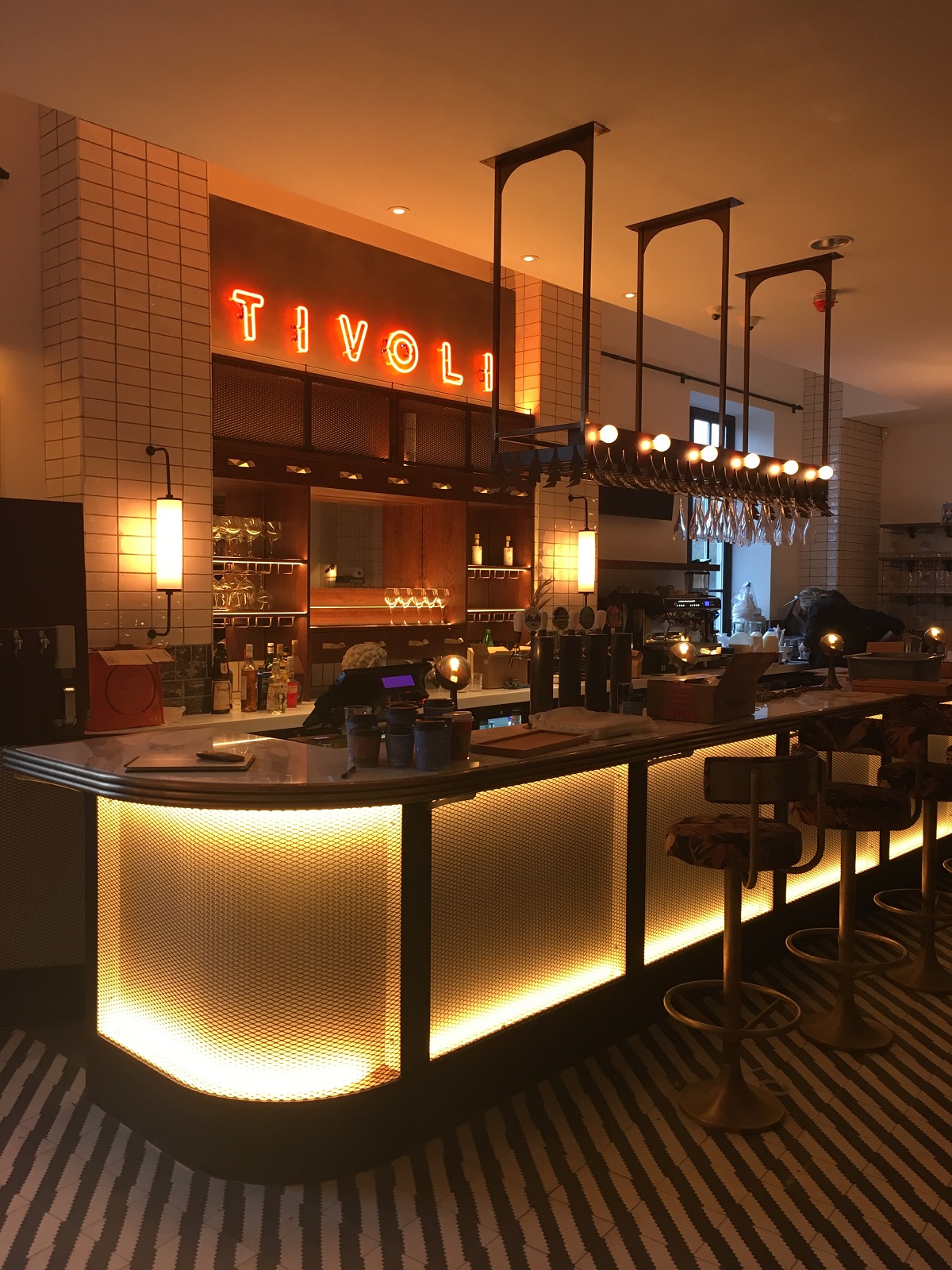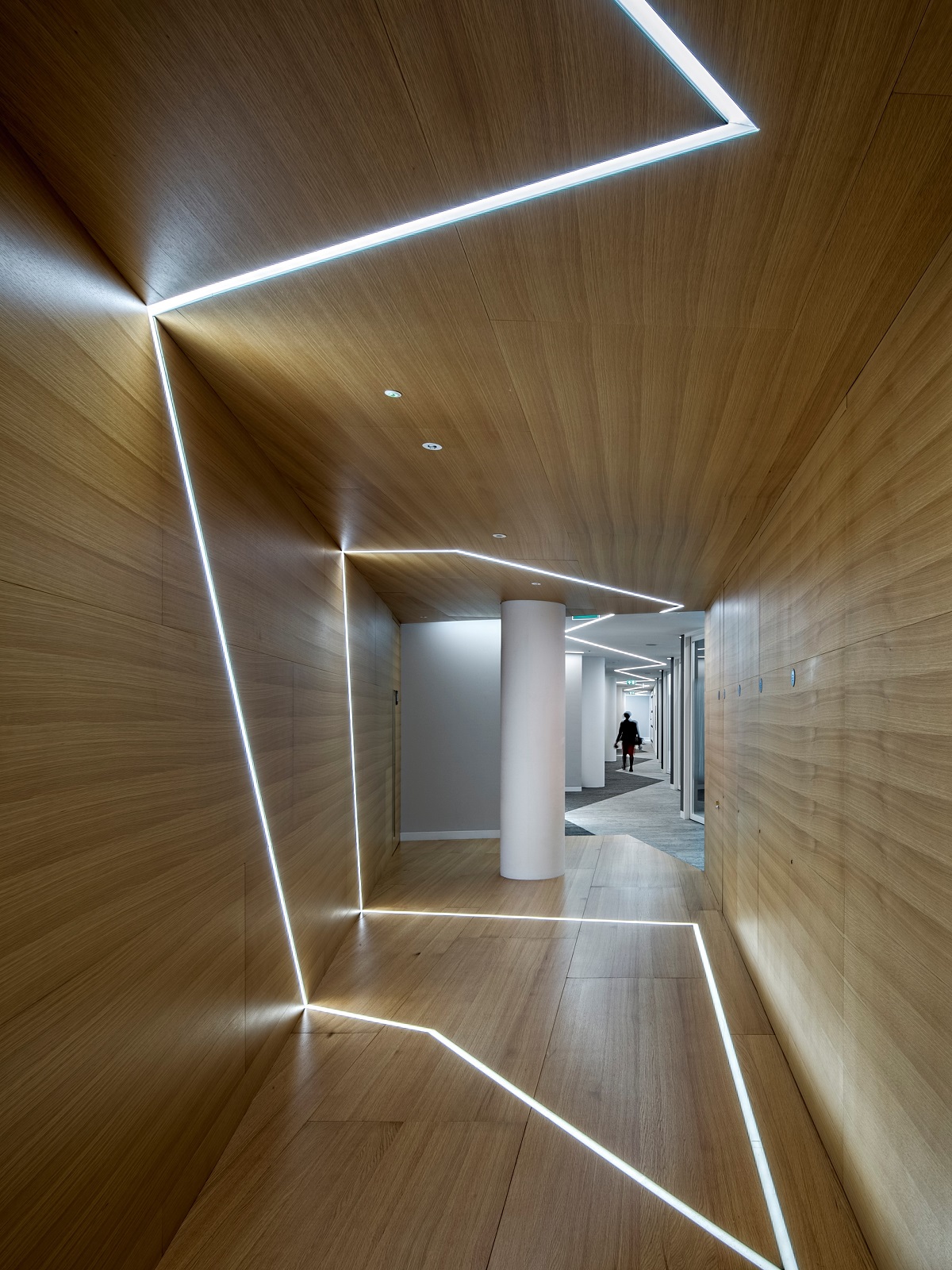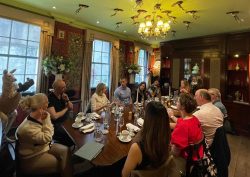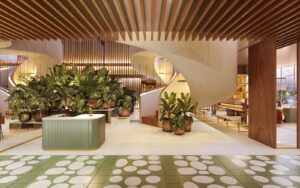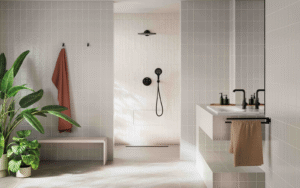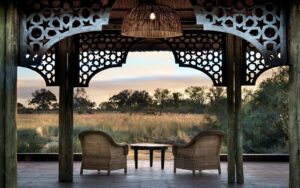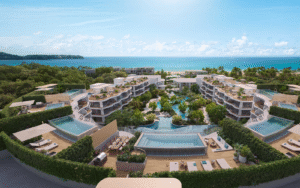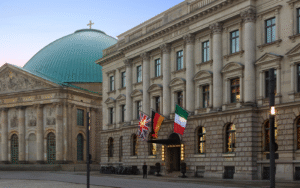In Hotel Designs’ latest roundtable, Editor Hamish Kilburn, in association with Franklite, invites leading interior and lighting designers to explore the reality of circadian lighting in hotels…
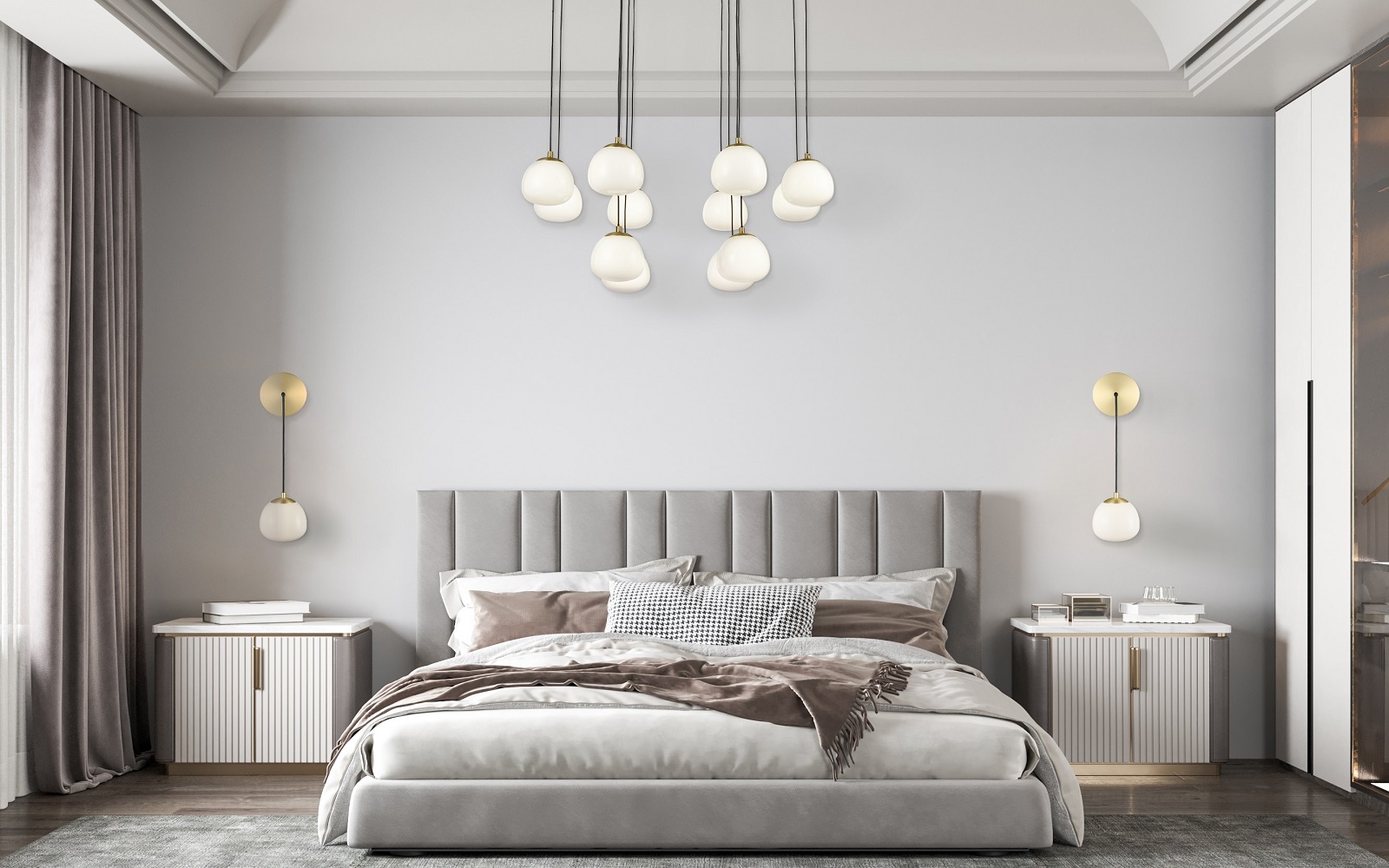
With wellness continuing to be high on the hospitality design agenda – and with hotels continually looking for innovative and meaningful ways to differentiate themselves – is circadian lighting the next big biophilic thing? The research on the benefits of circadian lighting is certainly out there, so with this in mind the question that was asked to start the conversation rolling was just how – and in fact if – all this research, information and interest in circadian lighting has changed or impacted our approach and expectations to lighting in hotel design.
To finally get some answers, Hotel Designs, in association with Franklite, brought together a handful of interior designers and lighting experts to explore the possibilities if budget was no barrier.
On the panel:
- Neil Knowles, Director, Elektra Lighting
- Richard Collings, vice President, SB Architects
- Wren Louks, CEO and Founder, Be-kin
- Beverley Bayes, Creative Director, Sparcstudio
- Ben Eneke, Senior Interior Designer, Blacksheep
- Olivia Susai, Associate Designer, Maison Arabella
Starting at the beginning of the design process, the designers were asked if lighting in general – circadian lighting specifically – is something that is being put on the design agenda by clients, or are the designers, and architects still required to convince clients of the benefits of a more integrated and thoughtful lighting design. “I think lighting is still something that we as architects introduce into the conversation,” said Richard Collings, Vice President, SB Architects. “People are still hesitant about it as it is hard to quantify the benefits, but it is certainly ripe for integration into hotels.”
Some aspects of circadian lighting have been employed in hotel design naturally for some time, particularly in public areas and in spaces that are required to be more multifunctional. This has meant designers and hotels have been able to change the function and the feel of a space at the flick of a switch – or two. The difference with this, is that, until now, this has been done from a central panel for a general space, as a controlled intervention. It was agreed by everyone around the table that taking this up a level to the individual guest was both more challenging as well as potentially interesting, as explained by Neil Knowles, Director, Elektra Designs. “There are some areas where you definitely need to control lighting in the hotel, and integrated lighting in areas such as all-day dining spaces has been implemented and understood for some time,” he said. “Before any discussion on the benefits of circadian lighting was brought to the table, what becomes both complicated and costly is when these lighting concepts are potentially introduced into the guestroom.”
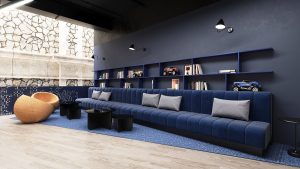
Image credit: Maison Arabella
It was clear from the conversation that the constant pull between technology and user experience is not a question that is followed by a single or simple answer. The debate continues both between designers and guests on the benefits of technology, particularly in the realm of lighting in the hotel guestroom. Are potentially overcomplicated design options the answer, when in fact all a guest really wants to do is flick a switch and turn on a light?
It goes without saying, in hotels, that any lighting solution should be as user-friendly as possible. “We need to think about the lighting early on,” said Olivia Susai, Associate Designer, Maison Arabella. “Rather than over-complicating it, the solution is possibly to make lighting task appropriate – with focussed spotlights for reading, ambient lighting for dining, daylight for mornings. I would say there is more enthusiasm for playing with the technology first. Embracing science-based evidence and benefits will inevitably follow.”
Drawing on his experience as a lighting designer, Knowles’ continued this train of thought. “Rather than overcomplicating lighting in the guestroom,” he added, “we have found that it is about providing effective options that are simple for the user to action.”
Lighting is yet another design detail that has been impacted by the change in the work/home relationship post-pandemic. The work-from-home lifestyle has trickled down into both office and hospitality spaces with more layered and directive lighting being used, as opposed to the purely functional. This, along with trending conversations on biophilic design concepts, means that interest around circadian lighting is organically growing as designers and clients explore ways to design for the mind as well as the eye.
“We are definitely finding our clients are more interested in different lighting solutions allowing for shifting needs,” said Susai. “And this, along with lighting that can be manipulated, result in a more personalised lighting solution.”
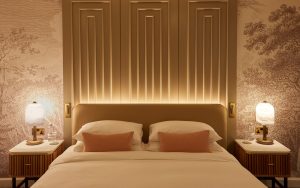
Image credit: Sparcstudio
From a purely design-driven perspective, circadian lighting can also potentially be quite flat. Flooding a space with white light might be energising, but how does it impact on the textural and tonal elements of a space? It is clearly about balance – the fine line between lighting for wellness and lighting for design, the scales between light and shadow. But are these concepts mutually exclusive?
With the industry constantly looking at innovative ways to introduce wellness through comfort, and importantly sleep patterns – from pillow menus to sound apps – circadian lighting is an area that is still relatively underutilised in the realm of the guest experience. “The closer we are to nature, the better,” asserted Wren Louks, CEO, Be-kin. “The rhythms of nature and natural light should be an integral part of design, and circadian lighting is key to that.”
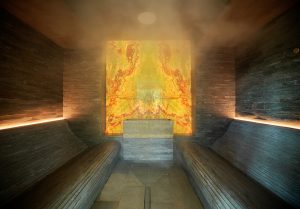
Image credit: Sparcstudio
On the design flip-side of circadian lighting, the trend for layered lighting – playing with shadows and pools of light rather than the pursuit of natural daylight as most clearly illustrated in the ‘members club’ trend – was discussed. Light can be used to create a journey and to make an experience feel more luxurious as lighting in hotel design has, it was agreed, become more creative. Increasingly it is being utilised as a design tool, creating focal points and, in some cases, a more immersive guest experience. Retail has been using lighting to direct and channel clients successfully for some time, and hospitality is now developing this as a concept in the hotel experience.
“In the retail context lighting is about doing something to you, while in the home it is about doing something for you,” said Mark Lissauer, drawing on his experience as Projects Director at Franklite. “Lighting in hospitality should be a bit of both, and circadian lighting has potentially a role to play in both these aspects.”
With circadian lighting being able to promote wellness, the question needs to be asked, if done incorrectly can it have an adverse effect? And if so, what are the lighting faux pas to avoid when injecting this technology? For circadian lighting to be introduced successfully in a hotel environment it does need to be automated to some extent – if left to the individual it potentially leaves too much room for error. Again referencing design considerations, there is also the danger of too much ‘white light’ being introduced at the expense of the more design driven layered lighting.
The balance between nature and nurture, light and shadow, is key to any successful interior. “Understanding circadian rhythms is important to allow us to then play with it and manipulate it when designing lighting, even if not utilising it directly,” said Ben Eneke, Senior Interior Designer, Blacksheep. Ideally this should not be an either/or scenario and the challenge for both hotel and designer is how to successfully integrate all these lighting elements into a solution that functions on all levels.
“The potential danger of an over emphasis on circadian lighting is that while it may be very good for your brain and general wellbeing, giving you a connection to nature,” said Beverley Bayes, Creative Director, Sparcstudio. “It can also be very flattening and potentially remove the nuances and richness of tone from more decorative led lighting.”
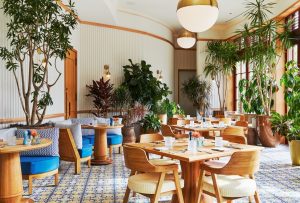
Image credit: SB Architects
As with all hotel design conversations, the question of sustainability needs to be put on the table. With an increased emphasis on natural lighting in hotel design that is inevitably part of the circadian conversation, it was pointed out that natural lighting is, to some extent the enemy of sustainability in hotels — a lot of glass flooding an interior with natural light does potentially mean less control of both lighting and heating. Is circadian lighting then in conflict with the space-saving pod design approach in contemporary hotels that often has access to minimal natural light? A possible solution mooted is that circadian lighting could be as much about controlling the outside environment, as it is about letting it in. Designers and hotels need to explore and develop innovative ways of introducing the idea of natural light if the sustainable balance is to be kept in check.
Finally, is this a trend or is it here to stay and evolve? Designers at the table agreed that if circadian lighting is going to move forward and be successfully integrated into a guestroom experience then it needs to be both personalised and simplified — on the surface at least. Clearly for the lighting to be both effective and simple, the complicated bits need to remain below the surface paddling towards a more circadian design future with furious swan-like momentum.
Franklite is one of our Recommended Suppliers and regularly features in our Supplier News section of the website. If you are interested in becoming one of our Recommended Suppliers, please email Katy Phillips.
Main image credit: Franklite





